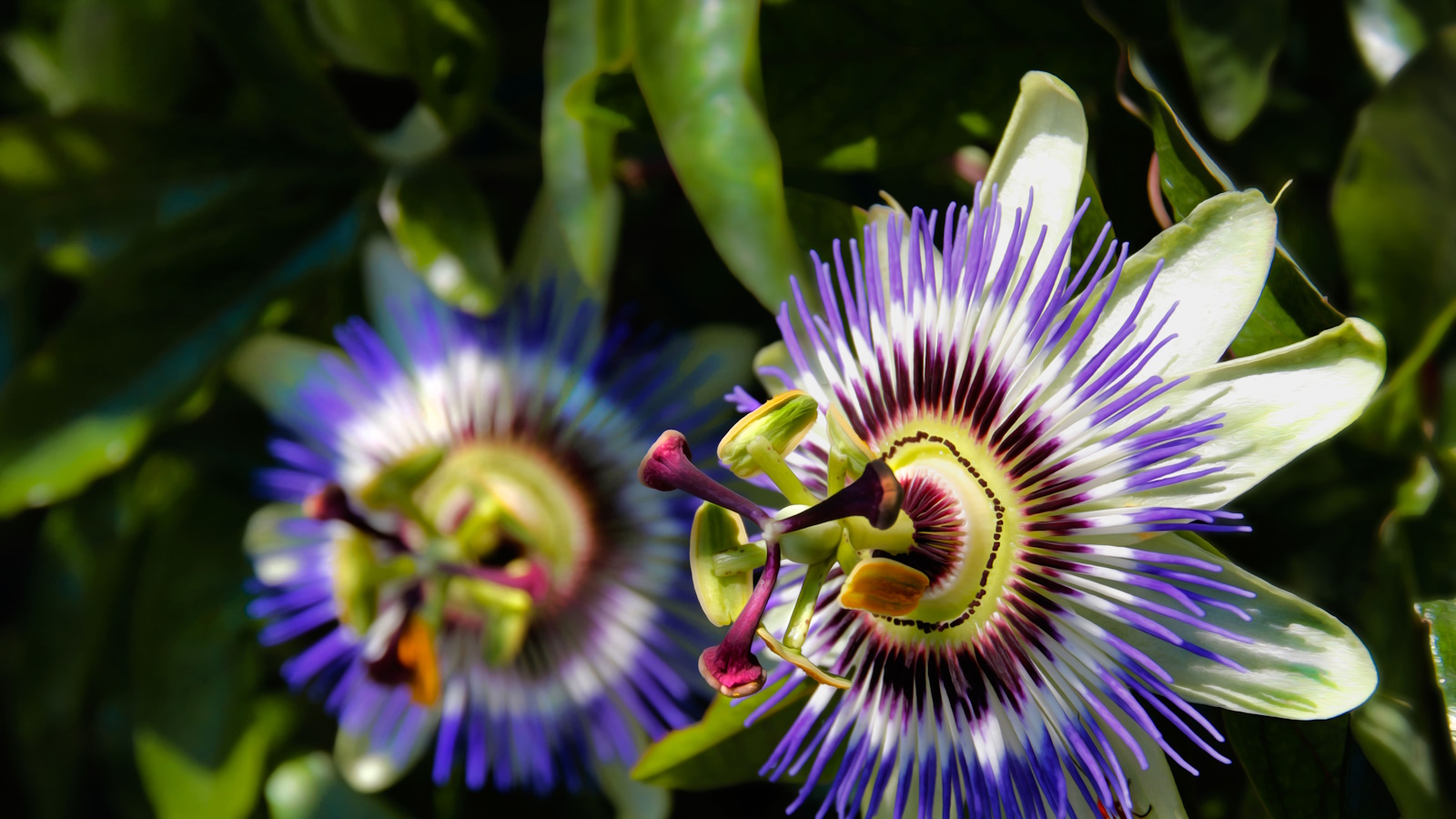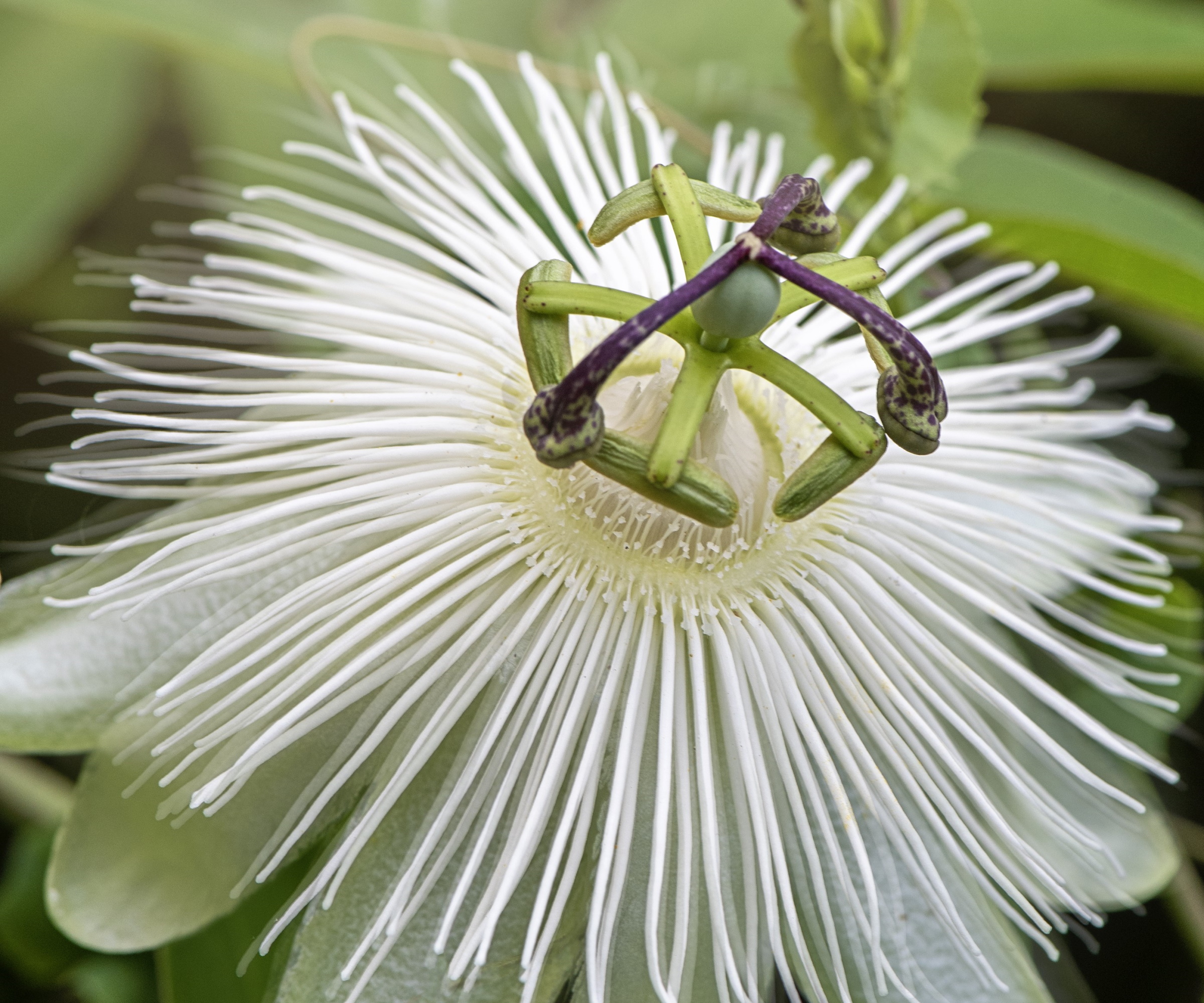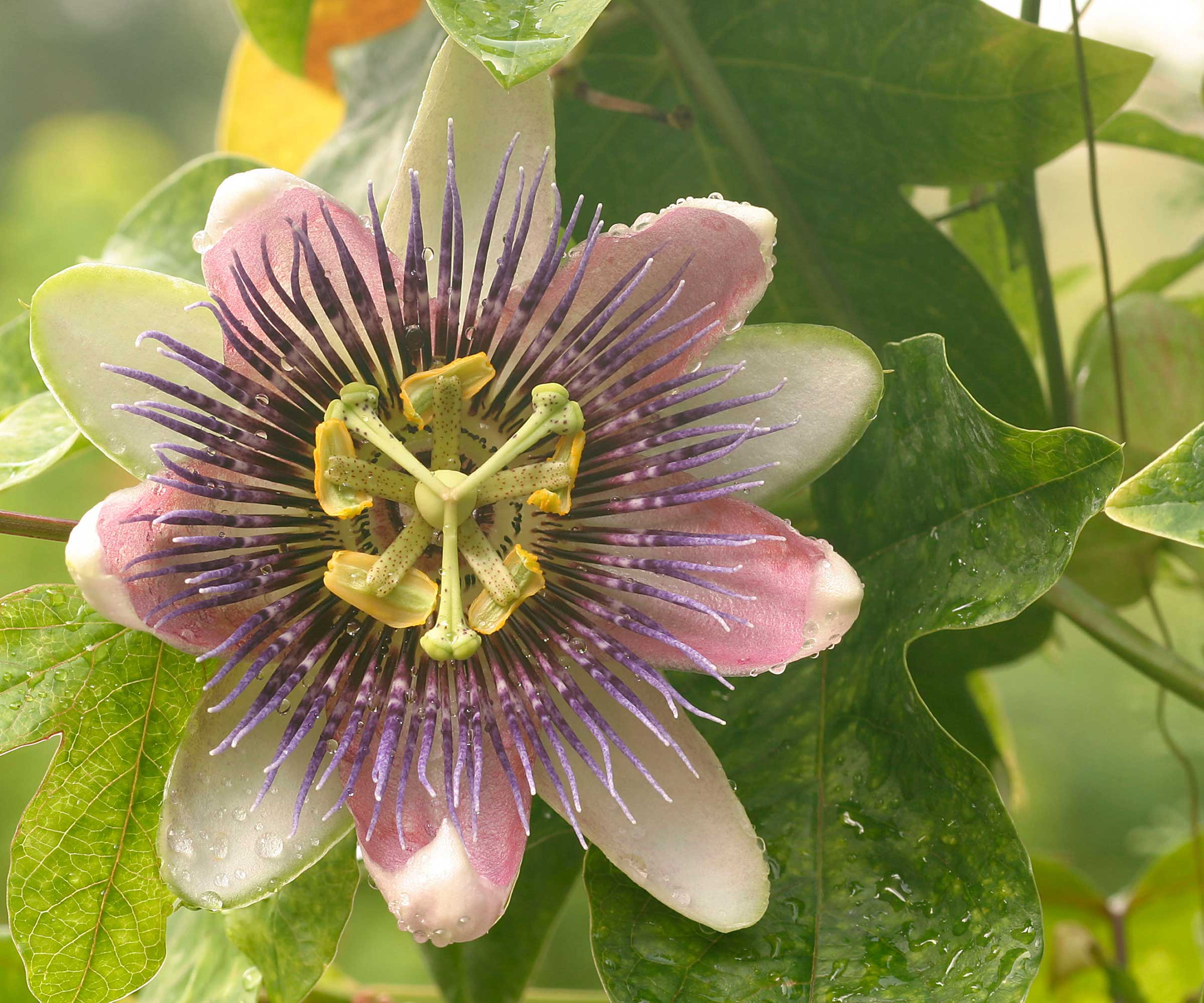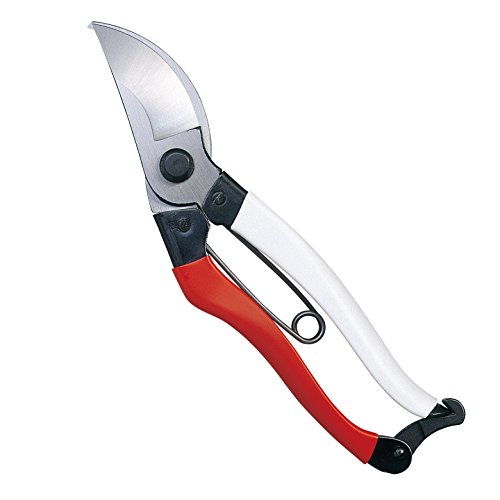When and how to prune passion flowers – for healthy climbing plants with plenty of brilliant blooms next year
Pruning at the right time will ensure your flowering climber thrives


Pruning your passion flower climbers at the right time and in the right way is important, and with the correct approach, you can be sure of a bounty of blooms next year. With such outlandish and otherworldly flowers, who wouldn't want to keep this plant in good health and looking its best?
While it will depend on the species and variety you grow, most passion flower plants are vigorous. For this reason, annual pruning is important. For example, Passiflora incarnata, commonly known as wild maypop, is an aggressive vine that is native to the southeastern United States and found growing across Georgia, Florida and Texas. Without regular maintenance, vines such as the wild maypop will quickly get out of control.
So, while you might know how to grow passion flowers, getting your pruning approach right is crucial to a tidy and well-maintained yard. Here, one passion flower expert shares all the information you need to keep these vigorous plants in check and full of flowers.

When and how to prune passion flowers
Passion flowers are often considered some of the best plants to cover a fence. As fast-growing climbing plants, they can quickly cover garden walls, fences and structures, filling your yard with lush green foliage and striking, unusual flowers. These native plants, however, can grow up to 20 feet in one year, which is an alarming rate, especially for those of us who garden in a small yard. Pruning is, therefore, an essential task.
When is the right time to prune passion flowers?

As fast-growing and vigorous plants, passion flowers are ideal if are are looking to create a vertical garden. The trick is knowing when to prune to keep them under control.
There are two times at which you should prune, either during late summer or early fall once flowering has finished or in spring, before new growth emerges. If you prune in late summer or early fall, it is best to give your plant a light trim, whereas in spring you can carry out some restorative pruning, if your passion flower needs some serious cutting back.
Passion flowers bloom on new growth (the current year's growth), so pruning in spring can result in fewer blooms for the first year, but can sometimes be necessary to revive or control an unruly climber.
Design expertise in your inbox – from inspiring decorating ideas and beautiful celebrity homes to practical gardening advice and shopping round-ups.
How to correctly prune passion flowers

'Most passion flowers will cope down to US hardiness zone 8, but there are some native options that can thrive even in US hardiness zone 5,' says Myles Stewart Irvine, garden expert and passion flower breeder.
'Wherever you grow them, these vigorous climbers can quickly fill trellises, wires and canes, so it is crucial to prune them appropriately,' Myles adds.
During late summer and fall, it is best to simply prune any long, unsightly, or messy stems. At this point, you can also tie in your climber to the trellis, wires or climbing supports in your yard. While passion flowers tend to vine and attach themselves rather effectively, it is a good idea to provide as much support as possible for the stormy months ahead.
In the early spring, once the risk of frost has passed, you can carry out a more thorough, restorative spot of pruning. 'You can cut back to the wood if you need to for messy climbers,' Myles adds. 'Be sure to leave two to three long woody, straggly bits of vine from where new growth will shoot.
'Your approach should be determined by where you live and your US hardiness zone,' Myles continues. 'In the tropics, you can get away with a lot. In northern regions with cooler climates, however, a hard prune can finish a plant. It is best to only prune what you need, be sure to leave a few stems, and always approach with caution.'
When pruning, use clean, sharp tools, such as these Felco snips from Walmart, to easily remove dead and damaged stems. While you might need to get rid of a significant amount of old stems, as Myles says, you should try to save a couple of woody stems with fresh new growth on them to ensure that your plant survives.

Myles has been breeding passion flowers since the late 1980s, releasing a number of hybrids since then. He created the Passiflora online site in 2000, and edited the Passiflora online journal. He keeps himself & his neighbors busy with his tropical garden.
FAQs
Should I fertilize my passion flower after pruning it?
Fertilizing should only be done during the spring and summer. Using a bloom booster feed during the growing season will encourage your plant to produce plenty of flowers. If you prune your passion flower in the fall, do not use a fertilizer, but instead apply a mulch to the surface of your borders and beds, which will help to improve the structure and quality of your soil.
If you leave your pruning until springtime, one benefit is that you get to enjoy the fruits that are produced during late summer and fall. The edible fruits that many of us enjoy are from the Passiflora edulis species, native to Brazil, Paraguay and Argentina. Before snacking on any fruits, always check what species you are growing, as some are not edible.
For more climbing plant care information, see our guide on how to prune jasmine, to ensure that your fragrant vines stay in good shape this year.

Thomas is a Content Editor within the Gardens Team at Homes and Gardens. He has worked as a professional gardener for both public spaces and private estates, specializing in productive gardening, growing food and flowers. Trained in Horticulture at the Garden Museum, he has written on gardening and garden history for various publications, including The English Garden, Gardens Illustrated, Hortus, The London Gardener and Bloom. He has co-authored a Lonely Planet travel book, The Tree Atlas, due out in 2024.

